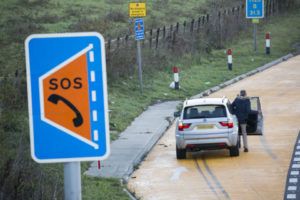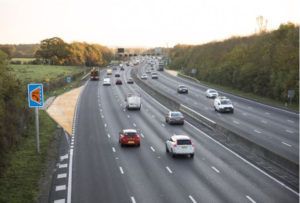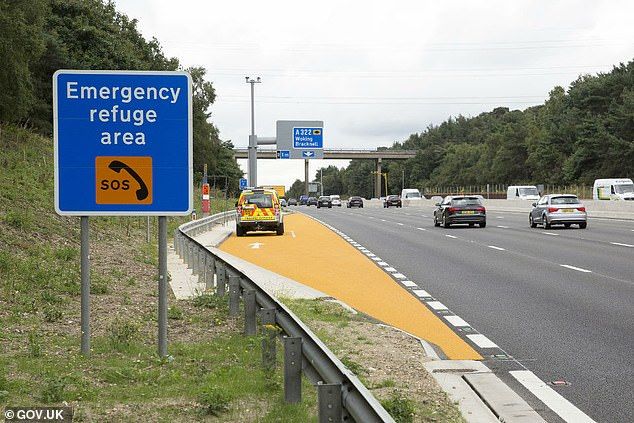As part of its long-term program of improvements on its ‘smart motorways’ network, Highways England (HE) is currently enhancing emergency areas on key Yorkshire motorways to make them more visible for drivers.
To increase capacity on the country’s road network, HE has been deploying its smart motorway system, which converts the previous hard shoulder for broken down vehicles into an additional lane. Vehicles experiencing difficulties are now guided to emergency refuge areas. For the safety enhancements in Yorkshire, HE has added extra signs to show drivers the distance to the next area and each refuge area will also have a marked-out box to make it clearer for drivers to see where the ideal central stopping position is. These new markings will also make it easier and quicker to recover vehicles. The move is part of HE’s ongoing program to enhance emergency areas on smart motorways to make them as easy as possible to spot and to discourage drivers from using them in non-emergency situations.
In Yorkshire, enhanced emergency areas will soon be seen on the M1 between Alfreton in Derbyshire and the A616 Stocksbridge bypass near Sheffield, on the M1 between Denby Dale and where the M1/M62 meet, and on the M62 between Rothwell and Brighouse. The emergency areas are set back from the carriageway to give greater protection than a hard shoulder and are designed to meet the needs of all the types of vehicles that use the motorway in the event of a breakdown. HE notes that it is expected that the vast majority of vehicles that break down will be able to get to a place of relative safety such as the emergency refuge areas, off the motorway to a slip road or a motorway service area.
There are currently signs on all smart motorways showing the distance to the next emergency area. For schemes starting construction from 2020, HE has committed to reducing the maximum spacing between places to stop in an emergency from every 1.5 miles (2.4km) to around every mile (1.6km). Every emergency area on a smart motorway with no hard shoulder has a sign stating that motorists must use the orange SOS phone for advice before re-joining the motorway. The phones connect drivers to a member of HE’s staff in a regional operational center, and traffic officers can then help the vehicle to leave the emergency area. HE is enhancing 347 emergency areas in total, with around 150 existing areas having been upgraded to date.
“Smart motorways are as safe as traditional motorways, which are already among the safest roads in the world. We recognize that as well as being safe, drivers want to feel safe and we have and will continue to make some changes to the design of motorways,” explained HE’s smart motorways program sponsor, Paul Unwin. “This includes making emergency areas more visible by making them bright orange which should also discourage drivers from using them in non-emergency situations. These redesigned emergency areas support our drive to improve awareness of smart motorway driving as part of our planned program of work, including what to do in an emergency and when to use an emergency area.”





